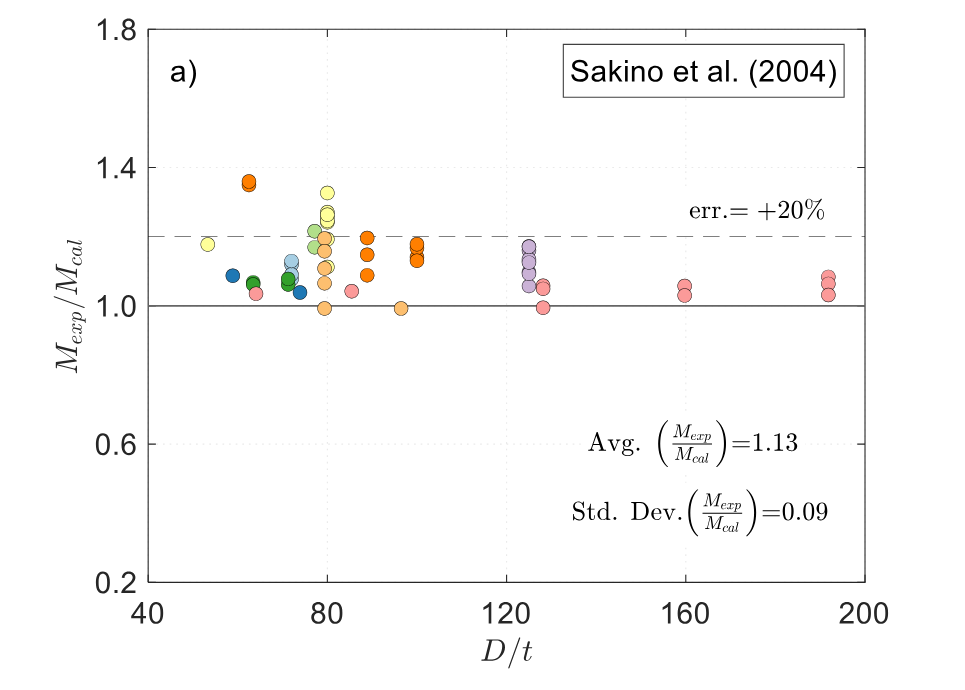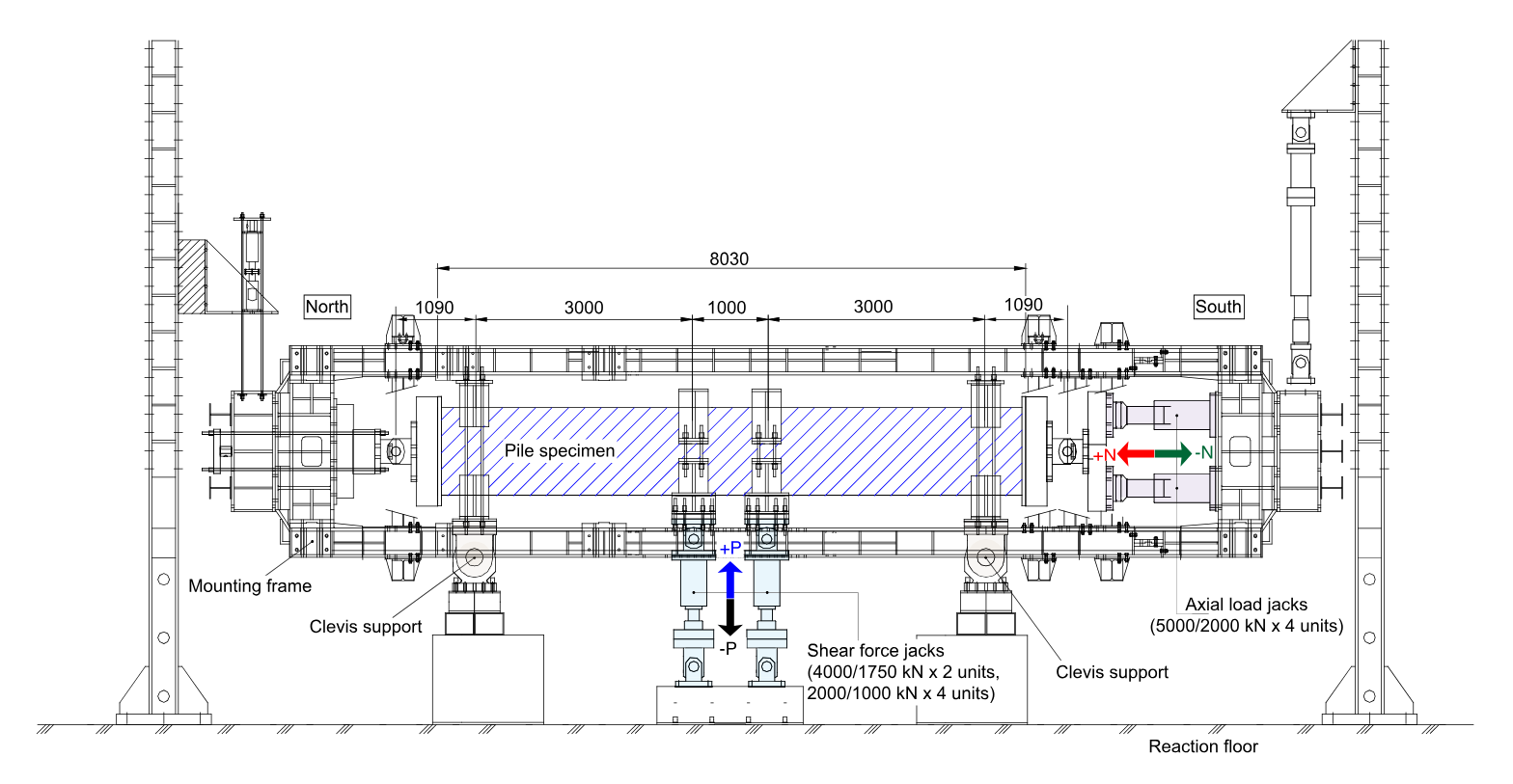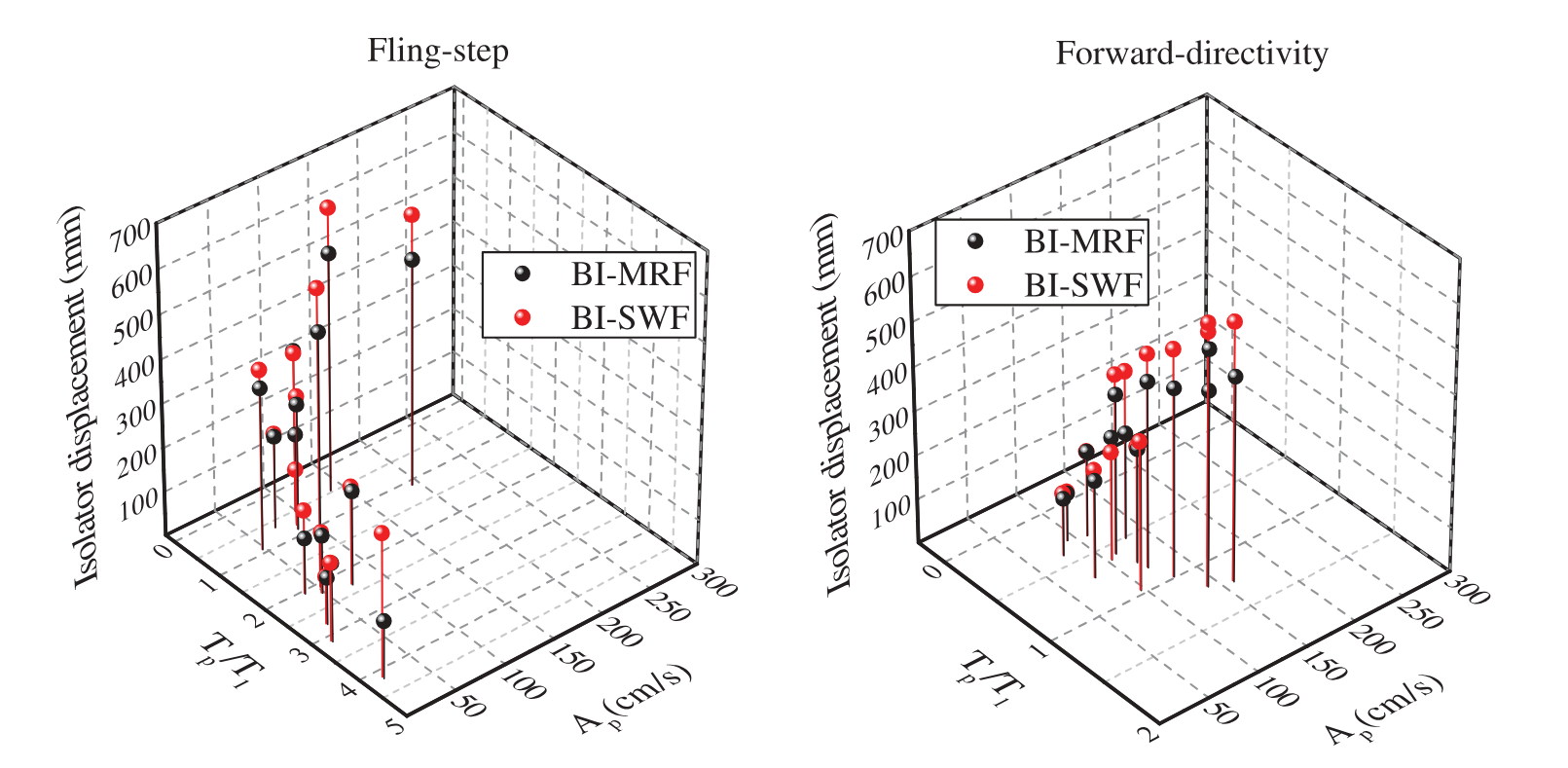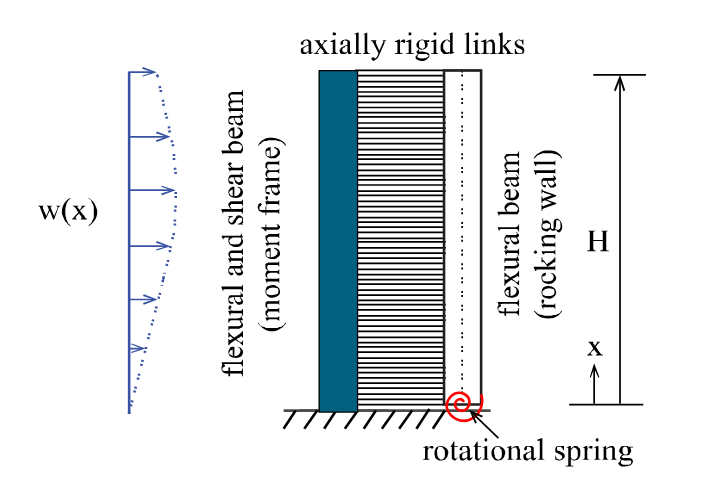Publications
2024
-
 Flexural strength-calculation methods for concrete-filled steel tubes with large D/tNaresh Subedi, Shristi Bhusal, and Susumu KonoJun 2024
Flexural strength-calculation methods for concrete-filled steel tubes with large D/tNaresh Subedi, Shristi Bhusal, and Susumu KonoJun 2024Due to their higher strength and deformation capacity, circular concrete-filled steel tubes (CFSTs) are widely used as columns, bridge piers, piles, and chord members in bridges and towers. Thin-walled steel tubes are increasingly used in CFSTs to lower the material cost and utilize high-strength materials, resulting in CFSTs with large diameter-to-thickness ratios (D/t>50). For example, CFST piles used in Japan have D/t ranging from 50 to 200. However, most of the current design standards (AIJ 2008, ANSI/AISC 360-22, CSA S16:19, EN 1994-1-1) limit the use of CFSTs with large D/t, primarily due to a lack of experimental data on CFSTs with large D/t and concerns of premature local buckling of the tube and concrete placement. Moreover, the D/t limits specified in the standards are based on (scaling) the corresponding limits for hollow circular sections that behave differently from their filled composite counterparts. This study aims to clarify these issues by examining the suitability of the flexural strength calculation methods in current standards to compute the strength of CFST with large diameter-to-thickness ratios. To this end, a flexural test database of large-diameter (D≥300 mm) CFST piles covering a wide range of D/t and axial load ratios is collated from the literature. The main observations from the experiments–pertaining to flexural behavior and strength–are summarized. The compiled database is used to evaluate the accuracy of the stress distribution and strain-compatibility-based approaches to compute the flexural strength of CFSTs in the American, European, and Japanese design standards. The results show that the current methods give conservative estimates of moment capacity (on average) for the CFSTs in the database. The findings from the present study also highlight that the D/t limits for ’compact’ sections in the current standards might be overly restrictive.
2022
-
 Evaluation of Stress-strain Models to Calculate Moment Capacity of Concrete-filled Steel Tube PilesNaresh Subedi, Taku Obara, and Susumu KonoJun 2022Paper no. 10443
Evaluation of Stress-strain Models to Calculate Moment Capacity of Concrete-filled Steel Tube PilesNaresh Subedi, Taku Obara, and Susumu KonoJun 2022Paper no. 10443Fiber-section-based analysis methods are commonly used to simulate the response of concrete-filled steel tube (CFST) members as a balance between accuracy and computational efficiency. These methods require stress-strain models that can implicitly capture the effects of the interaction between the tube and concrete, such as concrete confinement, biaxial stress-state of the tube, and local buckling of the tube. Many such models have been proposed, which include all/some of the salient features of CFST. Most of these models were developed based on the results of axially-loaded stub columns—mostly small-diameter CFSTs with relatively small diameter-to-thickness (D/t) ratios. Accordingly, there is a need to evaluate the suitability of the stress-strain models to calculate the moment capacity of CFST piles, which have large diameters (D > 300 mm) and large D/t (> 50). Herein, we compare the moment capacity calculated using seven commonly used stress-strain models with the test results from the literature. To this end, a database of flexural tests of 51 large-diameter CFSTs is collated. Results show that all seven models give conservative estimates of moment capacity, and the model proposed by Sakino et al. (2004) gives the most accurate estimates. These findings are expected to help designers involved in modeling CFST piles.
-
 Flexural performance of cast-in-place concrete-filled steel tube piles under varying axial loadNaresh Subedi, Shreya Thusoo, Taku Obara, and 5 more authorsThin-Walled Structures, Jun 2022
Flexural performance of cast-in-place concrete-filled steel tube piles under varying axial loadNaresh Subedi, Shreya Thusoo, Taku Obara, and 5 more authorsThin-Walled Structures, Jun 2022Concrete-filled steel tube (CFST) piles with thin-walled tubes are widely used as foundations for buildings and bridges in high seismic regions. To design these piles for large earthquakes, it is necessary to test specimens of realistic size under axial loads representative of actual design conditions. However, previous experimental studies of CFSTs were carried out mostly on small-diameter specimens with small or no axial load. To address this issue, cyclic flexural tests were conducted on five large-scale CFST pile specimens under varying axial load, with the range of axial load ratio (−0.21 to 0.38) and internal reinforcement as test variables. The specimens had a diameter of 1200 mm and diameter-to-thickness ratio of 125. This study discusses issues relevant to the design and performance assessment of piles such as moment capacity, hysteretic response, damage progression, strain distribution, and strain limits. It is observed that the ultimate condition of CFST piles is governed by the rupture of the tube, and these piles retain axial load-carrying capacity even after the tube ruptures. Internal reinforcement is effective to improve the deformation capacity and energy dissipation of piles. These findings contribute towards the rational seismic design of CFST pile foundations for large earthquakes.
-
 Noncompact and slender concrete-filled steel tubes under axial compression: Finite-element modeling and evaluation of stress-strain models for fiber-based analysisNaresh Subedi, Taku Obara, and Susumu KonoJournal of Constructional Steel Research, Jun 2022
Noncompact and slender concrete-filled steel tubes under axial compression: Finite-element modeling and evaluation of stress-strain models for fiber-based analysisNaresh Subedi, Taku Obara, and Susumu KonoJournal of Constructional Steel Research, Jun 2022This study provides guidelines for the detailed finite-element modeling and efficient fiber-based analysis of noncompact/slender CFSTs under axial compression. To this end, a finite-element model capable of explicitly simulating the interaction between the concrete and steel tube is developed in LS-DYNA. The accuracy of the proposed model is verified using a database of ninety-six noncompact and slender CFSTs compiled from the literature. In addition, seven sets of most commonly used stress-strain models for the fiber-based analysis of CFSTs are briefly reviewed. The suitability of the stress-strain models to simulate the behavior under axial compression is evaluated using the experimental data in the compiled database and the finite element analysis results. The results show that the proposed finite-element model reasonably simulates the axial compression response of noncompact and slender CFSTs. For the fiber-based approach, Sakino’s model gives the best prediction of the full-range axial load-displacement response. Findings from this study will help the designers and researchers to select appropriate modeling approaches and model parameters for the design and analysis of noncompact and slender CFSTs.
2021
-
 Influence of Near-Fault Ground Motions with Fling-Step and Forward-Directivity Characteristics on Seismic Response of Base-Isolated BuildingsSatish Bhagat, Anil C. Wijeyewickrema, and Naresh SubediJournal of Earthquake Engineering, Jun 2021
Influence of Near-Fault Ground Motions with Fling-Step and Forward-Directivity Characteristics on Seismic Response of Base-Isolated BuildingsSatish Bhagat, Anil C. Wijeyewickrema, and Naresh SubediJournal of Earthquake Engineering, Jun 2021The behavior of base-isolated buildings under near-fault (NF) ground motions with fling-step and forward-directivity characteristics is investigated using three-dimensional nonlinear finite element models. Nonlinear response history analysis (NLRHA) is also carried out after removing the dominant pulse from the NF ground motion records. The results obtained for 10-story base-isolated buildings with and without shear walls, indicate that NF ground motions with fling-step and forward-directivity characteristics produce large inter-story drift ratios and floor accelerations, compared to the case when the dominant pulse is removed. Additional NLRHA carried out using artificial pulses shows that the isolator and superstructure responses are larger for pulses with fling-step characteristics, compared to pulses with forward-directivity characteristics.
2020
-
 Lateral Load Analysis of Rocking Wall-Moment Frame Systems Considering Axial Deformation of ColumnsNaresh Subedi, Anil C. Wijeyewickrema, and Susumu KonoSep 2020Paper no. 2c-0043
Lateral Load Analysis of Rocking Wall-Moment Frame Systems Considering Axial Deformation of ColumnsNaresh Subedi, Anil C. Wijeyewickrema, and Susumu KonoSep 2020Paper no. 2c-0043Considerable damage to reinforced concrete walls during strong earthquakes has led to the development of innovative precast concrete walls known as rocking walls that can uplift and rock about their base. These walls may be equipped with energy dissipating elements to limit damage to the structural components and post-tensioning to provide self-centering capability. The benefits of rocking walls can also be utilized in rocking wall-moment frame (RWF) systems, where the moment frame and rocking wall share the total gravity loads and design seismic forces. Previous analytical studies of the lateral load response of RWF systems have simplified the frame as an equivalent shear cantilever with no axial deformations (assuming axially-rigid columns). However, for tall and slender frames, axial extension and shortening of the columns cause global bending and associated lateral displacement of the structure cannot be ignored. The present study addresses this by extending the analytical solution to include the contribution from axial deformation of columns. Closed-form solutions for the lateral deformation, shear force, and bending moment are obtained for typical loading profiles. The accuracy of the proposed solutions is verified with the results from detailed finite element analysis. These solutions are then utilized to investigate the influence of axial deformation of frames, relative stiffness between frame and wall, and wall base restraint on the response of the RWF system. The results show that axial deformation of columns increases overall displacement and drift of the RWF system. These effects are more pronounced for higher frame-to-wall stiffness ratios where the frame controls the overall system response.